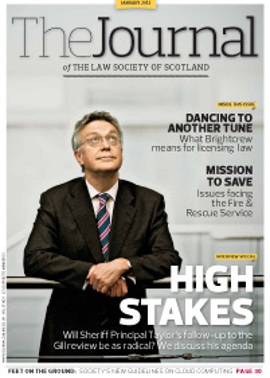Preparing for spring

In one of Peter Sellers’ finest roles, in the 1979 film Being There, he plays an unassuming gardener who is mistaken for a brilliant philosopher. When the US President asks him whether they can stimulate growth through economic incentives, Sellers’ character, Chauncey Gardiner, says: “As long as the roots are not severed, all will be well in the garden.” As the President interprets this as a fable, Chauncey then says: “Growth has its seasons… There will be growth in the spring!” The White House thinks it has found the solution to all its problems.
On one level, the film is a satire on desperate politicians, dealing with economic difficulties they can’t solve, but it also subtly draws you into a subconscious desire to take a simpler view of challenges, as a means of better understanding these and then finding solutions. So, as our own economic winter drags on, is it a good time to take the opportunity to assess your business model to ensure your approach is appropriate for the hoped-for springtime of recovery?
A checklist of six simple questions can be very useful in stimulating thinking:
1. Is the current strategy sufficiently articulated, up to date and focused?
Whether it’s an in-depth formal document, or a less complex set of key messages and goals, it’s important to check that the strategy is understood at all levels within the business. Leadership at various levels is particularly important in ensuring the message filters down. It’s also often worth taking a polishing cloth to existing visions and goals, to ensure they are a good fit with the world in which we now operate. Updating these can be motivational for staff, confirming the values and culture that are important to success going forward.
2. Are any internal totems or taboos holding back progress?
All businesses have these, and they can hinder growth and opportunity. Totems are the central sacred assumptions on how the firm operates. Taboos are the “questions that must not be asked” about the way things are done. These in fact do need to be challenged periodically, and altered or even binned if no longer appropriate. Totems and taboos are often ingrained in the firm’s culture and therefore not really seen as issues, so an external pair of eyes, providing objective feedback, can be illuminating for the firm. By confronting or replacing some aspects of a firm’s culture, new opportunities can arise and improved procedures implemented.
3. What does the firm excel at, and can this be leveraged further?
The converse of totems and taboos is the business-specific skills that are taken for granted, or not fully recognised as anything special within the firm. An exercise to define formally “what we’re good at” can lead to: (a) greater strategic focus on getting more work of the same type, appropriate to identified skillsets; and (b) a route into new business sectors where the skills have not been fully applied, because they were less well understood. This can involve moving out of a comfort zone, but properly defining the firm’s centres of excellence will deliver greater confidence to follow new paths.
4. Is the firm adapting to ongoing changes and new opportunities?
The emerging paradigm for legal services is now fairly well understood, and firms should ask themselves which of the opportunities/challenges they have adapted to successfully and which they have not, in each case identifying the reasons why. Challenging accepted reasons for taking less successful paths, such as “we don’t have the abilities for area X”, is worthwhile, because the speed of change is such that previously dismissed opportunities may have become attractive again.
5. Are key performance indicators sufficient, appropriate, and properly used?
Financial information as a performance control mechanism is only useful if it is both successfully presenting the important figures and serving to instigate change. The ongoing usefulness of your style of reports needs critical appraisal, and for certain areas – working capital and client profitability, for example – additional reporting may now be required, given their importance to both internal and external stakeholders.
6. Does the plan review cycle enhance decision making?
All businesses have some kind of marketing and business plan which is reviewed to compare actual with forecast, but does this process enhance the firm’s decision making? If the strategic actions taken at every quarterly review are not very evident, the information must be insufficient to stimulate debate and actions, so more useful detail should be established as the norm.
Clearer picture
By addressing these six simple questions, greater clarity on the way forward can be gained and implemented for the majority of businesses, and some new opportunities, and challenges that need addressing, are also likely to emerge.
In the much-debated final scene of Being There, Chauncey Gardiner is seen walking on water, as if to emphasise the achievements of this humble man. While a similarly “miraculous” fast-paced recovery from the current downturn may be a bit much to hope for, modestly improved economic times may not be too far away and it is worth preparing for these now, while there is time to consider carefully any strategic changes that will make a difference.
In this issue
- Reading for pleasure
- IP: the call of the south
- IP: home advantage
- Forcing: the issues
- Construction disputes: what of mediation?
- The key to effective trainee development
- Opinion
- Book reviews
- Council profile
- President's column
- Register reborn
- Justice at stake
- A matter of life and death
- The future is Brightcrew?
- Safe keeping
- Always something new
- Control switches
- Hard cases
- Whose law rules?
- Service complaint figures
- Scottish Solicitors' Discipline Tribunal
- Mora no more?
- Head in the cloud - feet on the ground
- Crown offers safer mail
- Law reform roundup
- CPD competition
- Don't be tempted!
- Ask Ash
- Preparing for spring






